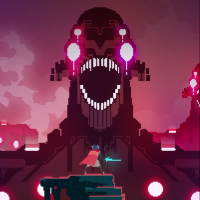-
Hello everyone
I was wondering how the transformation caused by 2 rotational axis affects the offsets of tools.
I am making the geometric model of a 5axis machine and I don't want to have any collision: got a spindle at 50000RPM max...
In a 3 axis machine, it's quite simple as tools don't rotate.I'll stick to geometry description:
- Th is the point where my tools are fixed when they are used.
- T1 is the endpoint of my tool N°1, (X1,Y1,Z1) is the array between this point and Th called Offset1
- T2 is the endpoint of my tool N°2, (X2,Y2,Z2) is the array between this point and Th called Offset2
Offset1 and Offset2 are determined when no rotation are applied to tools
How does DUET take that into account when rotations occurs if they can?
Should I set equations in the offset definition?
I'm a little bit lost on this aspect on DUET -
 undefined Phaedrux moved this topic from My Duet controlled machine
undefined Phaedrux moved this topic from My Duet controlled machine
-
withe a non rotating spindle and workpiece on trunnion your cam software should be doing all the math for you regarding tangencies. you just touch off tools to a known point. in z i.e. top of part, tool setter.......... thats why you pay the $bux$ for full 5 axis cam software you can also just to 5 axis positioning running a 3 axis program with an a and b workpiece rotation. most things dont require all 5 axes moving at once
with tilting heads it called TCRP in fanuc speak and its alot of math and knowing the stickout distance from a gage line on the spindle/toolholder. if duet doesn't have cutter comp they're not gonna have tip comp anytime soon.
-
The "fun part" of my issue is that I work on a tool changer machine, which means that I can have a spindle and cutting tool as well as a 3D printing device or a laser engraving tool.
For each of them, I have a different offset and CAM software don't take into account different process... (or I'm missing something)
If I do the maths, does the DUET3 will undestand it?for example, if I set offsets like this for each tool of each process
X offset = x cosC - y sinC cosA + z sinC sinA
Y offset = x sinC + y cosA cosC - z sinA cosC
Z offset = y sinA + z cosA
will the end of every tool will be at the same positions if I code something like:
G1 X100 Y100 A0 C0
G1 X100 Y100 A180 C0
G1 X100 Y100 A180 C180
G1 X100 Y100 A0 C180
G1 X100 Y100 A0 C0 -
@jean-baptiste
tool changer aside are you using a trunnion or a tilting head, does work piece move or does tool move?have you done 5 axis programing before? what software are you using? im fluent in masterscam powermill work NC can get by in a few others. maybe i can explain it a little better. have you tried it with just one tool? how are you setting your tool length and finding centerline on the trunion(if using one)?
any hooo
If you draw your part in cam software the correct distance from centerline of the trunnion x,y,z, your ucs should be the point all these axes intersect at machine zero. and your tool tip is touched off in the correct spot that your machine is setup for the software does all the math. the duet is just playing back the g code it doesn't care how long your tool is. this is for a trunnion style machine. as far as the tool changer goes gonna have to get that from someone else but i know people have made macros for tool setters in this forum. usually this is done with G43H(tool number) but not on a duet.
i have never used trig functions to set an offset on a machine tool. well i take that back i have twice but it was a work probe hitting a spherical tooling ball at a known angle i think your over complicating this unless your spindle is tilting then i don't think it will work
-
@miss-rebekah
The sad thing is we move the tool in 4 axis and the "workpiece" is Z moved (like most of 3D printer).
If I had a "trunnion" it would be more simple, I agree but no...
I'm programming 5axis tool path on Fusion 360
It is just for now I am anticipating some work on a machine my firm is designing.
I'm making the postprocess and this issue came to my mind."the duet is just playing back the g code it doesn't care how long your tool is"
I'm aware of that and it scares me a lot